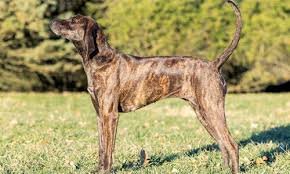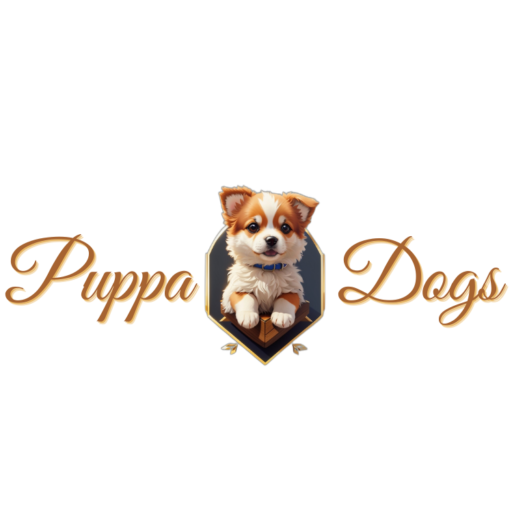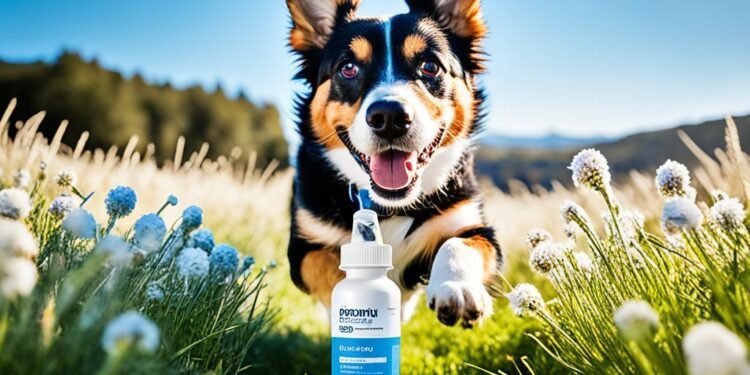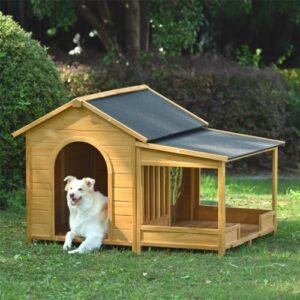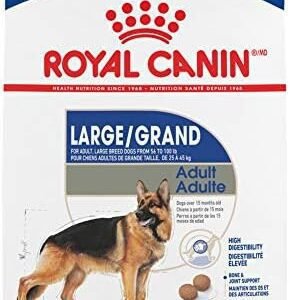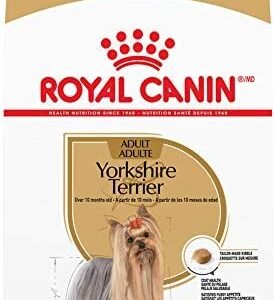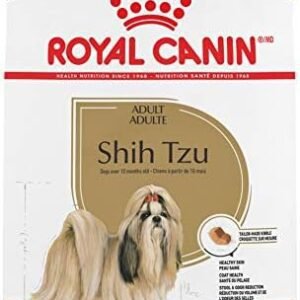Canine parainfluenza virus (CPIV) is a highly contagious respiratory illness that affects dogs worldwide. It’s responsible for many outbreaks. This disease can make your dog very sick and even lead to serious health issues.
Parainfluenza is a unique virus linked to canine distemper. It has similar symptoms to the flu but needs its own treatment and prevention.
Parainfluenza is part of a respiratory complex that spreads easily. Dogs with this infection can also get kennel cough. In some cases, they may also get infections like bordetella, adenovirus, and pneumonia.
Key Takeaways
- Canine parainfluenza virus is a highly contagious respiratory illness that affects dogs globally.
- The disease can be mostly prevented by vaccination, but the vaccine may only protect for less than 3 years.
- Dogs with social activities should consider the intranasal vaccine for CPIV and Bordetella.
- Combination of injectable and intranasal vaccines provides the most robust immune response for socially active dogs.
- Parainfluenza can create weaknesses in the respiratory tract, allowing more serious opportunistic pathogens to infect.
Table of Contents
What is Canine Parainfluenza Virus?
Canine parainfluenza virus (CPIV) is a highly contagious respiratory virus. It is one of the most common causes of a cough in dogs. This virus leads to outbreaks of respiratory diseases in dogs all over the world.
Causes of Parainfluenza Infection
Dogs with CPIV can also get other respiratory diseases like kennel cough and pneumonia. Coughing is the main symptom, along with fever, loss of appetite, tiredness, and more nasal discharge.
How CPIV Spreads
The virus spreads mainly by touching other infected dogs, especially in places like kennels and shelters. It can also spread through coughs and sneezes, and through shared items like bowls and bedding. Even dogs that don’t show symptoms can spread the disease.
“Parainfluenza virus is easily spread through the air and can pass from dog to dog, especially in places like kennels, shelters, and dog racing tracks.”
Symptoms of Parainfluenza in Dogs
Parainfluenza virus is a contagious illness that affects dogs’ respiratory systems. It often causes a persistent cough, which can be dry or wet. Some dogs may cough up blood. They also have a fever and seem unwell, showing less energy and appetite.
Dogs with parainfluenza may have a runny nose and increased nasal discharge. Some dogs don’t show symptoms but can still spread the virus. This makes them a big risk for other dogs.
Puppies and older dogs with weak immune systems are more likely to get parainfluenza. They may have worse symptoms. Toy breeds are especially at risk of getting pneumonia from thick secretions in their throats.
“Parainfluenza is a highly contagious respiratory illness in dogs that can be prevented with regular vaccinations.”
Recognizing parainfluenza symptoms early and getting vet care is key. It helps manage the disease and stop it from spreading. Knowing the signs of this virus helps pet owners protect their dogs.
High-Risk Dogs for Parainfluenza
Certain dogs are more likely to get the canine parainfluenza virus (CPIV). Puppies and older dogs with weak immune systems are at higher risk. Toy breeds also face a greater chance of getting pneumonia from CPIV.
Environments That Increase Risk
Where dogs live and meet can affect their chance of getting CPIV. Kennels and shelters are places where the virus spreads fast. This is because dogs are close together and share spaces. The virus spreads mainly through the air from coughing and sneezing. It can also spread through dirty food and water bowls, and shared bedding.
- Puppies and older dogs with weak immune systems are at higher risk for CPIV infections
- Toy breeds are more susceptible to developing pneumonia as a complication of CPIV
- Kennels and shelters are high-risk environments due to close contact and shared spaces
- Transmission occurs through airborne droplets from coughing and sneezing, as well as contaminated surfaces
Knowing what makes some dogs more at risk helps protect them. Pet owners and vets can take steps to keep these dogs safe. This can help stop the spread of this illness in places where dogs are often together.
Diagnosing Canine Parainfluenza
Your vet will need to check your dog carefully to diagnose parainfluenza. They will ask about your dog’s recent activities and if they were near other dogs. This virus spreads fast in places dogs hang out, like kennels, salons, and parks.
Your vet will check your dog over, looking for signs like trouble breathing, fever, and other symptoms. They might also run some tests to be sure:
- Blood tests to check for the presence of antibodies to the parainfluenza virus
- Fluid or tissue samples collected from the nose or throat for virus culture or PCR testing
- Imaging techniques like x-rays or CT scans to evaluate the lungs and airways
These tests for parainfluenza help your vet diagnose canine parainfluenza. They make sure it’s not something else. Getting it right quickly is key for the right treatment and keeping other pets safe.
“Rapid and accurate diagnosis of canine parainfluenza is crucial for effective treatment and controlling the spread of the virus.”
Treatment for Parainfluenza in Dogs
If your dog has the canine parainfluenza virus (CPIV), your vet will focus on care and support. They won’t usually suggest hospitalization. The virus spreads through the air and can stay in the air for up to two weeks.
Your vet might suggest ways to keep your dog healthy and comfortable. This includes proper nutrition, hygiene, and nursing care. They might also look into environmental factors that could be making your dog sick.
If your dog has a persistent cough, your vet might give cough suppressants with codeine. For serious or ongoing cases, they might prescribe antibiotics like cephalosporins, quinolones, chloramphenicol, or tetracycline. The choice of antibiotic depends on culture results.
Your vet might also suggest bronchodilator pretreatment and aerosolization treatments. These help with symptoms of dog respiratory illness.
| Treatment Options for Parainfluenza in Dogs |
|---|
| Supportive care (nutrition, hygiene, nursing) |
| Cough suppressants (containing codeine derivatives) |
| Antibiotics (cephalosporins, quinolones, chloramphenicol, tetracycline) |
| Bronchodilator pretreatment and aerosolization treatments |
Working with your vet is key to treating parainfluenza in dogs. They’ll create a plan that fits your dog’s needs and symptoms. With the right care, most dogs with parainfluenza can get better and feel well again.
parainfluenza vaccine for dogs
Keeping your dog healthy is important, and the parainfluenza vaccine is key. It’s often given with the DHPP shot to protect against the canine parainfluenza virus. This vaccine is crucial for your dog’s health.
Vaccination Schedule for Parainfluenza
At New England Veterinary Center & Cancer Care, we suggest starting the DHPP vaccine at 6 to 8 weeks old. Then, give booster shots at 10-12 weeks, 14-16 weeks, and again at 12 to 16 months. Annual shots and check-ups keep your dog safe from parainfluenza and other diseases as they grow.
The Nobivac Intra-Trac Oral BbPi vaccine protects against parainfluenza and Bordetella bronchiseptica. It’s a thimerosal-free and preservative-free vaccine. Dogs find it more comfortable thanks to the Immuno-Mist-R applicator by Intervet, a Merck & Co. subsidiary.
| Vaccine | Dosage | Administration |
|---|---|---|
| Nobivac Intra-Trac Oral BbPi | 1 dose | Orally misted towards the back of the mouth using the Luer lock syringes provided |
Canine parainfluenza spreads fast among dogs in crowded places like parks or daycare. Keeping your dog safe with the parainfluenza vaccine for dogs and following the dog vaccination schedule is key. It’s vital for their health and happiness.
“Preventing coinfection of the respiratory tract with multiple pathogens in environments like parks or daycares frequented by social dogs is crucial,” said Madeleine Stahl, DVM, associate director of medical affairs at Merck Animal Health.
Preventing Parainfluenza Outbreaks
Keeping your dog safe from the parainfluenza virus is key to their health. Vaccines are the best way to stop outbreaks. These vaccines often come with shots for distemper and parvovirus, giving your dog full protection.
Every year, your dog needs a booster shot to keep fighting the virus. Puppies can get their first vaccine at 6-8 weeks old, along with other important shots. If your dog goes to places like kennels or dog parks, make sure their vaccine is current.
Some dogs carry the parainfluenza virus without showing symptoms. It’s important to keep your dog’s vaccine up-to-date. Following a regular vaccination schedule and keeping your dog’s area clean can help stop the virus from spreading.
| Vaccine Effectiveness in Reducing Coughing | Percentage |
|---|---|
| IN-BP vaccine | 20.7% |
| IN-BPA vaccine | 24.4% |
The table shows how well the IN-BP and IN-BPA vaccines work against coughing from parainfluenza. These vaccines help stop the virus from spreading, keeping dogs healthy.
By keeping an eye on your dog’s vaccine schedule, you can shield them from this common illness. This also helps stop outbreaks in your area.
Canine Parainfluenza vs Other Respiratory Illnesses
Canine parainfluenza and canine influenza share similar symptoms but are different viruses. They spread quickly in places with many dogs, like parks, shelters, and boarding places.
Differentiating Canine Influenza
Canine parainfluenza mainly hits the nose, bronchi, and pharynx. It doesn’t usually go to the lungs. The virus can stay in the air for up to two weeks after a dog gets better, making it still contagious.
Canine influenza, however, targets the lungs and doesn’t spread as long.
Canine parainfluenza is often linked with other infections like canine adenovirus-2 and Bordetella bronchiseptica, causing kennel cough. But canine influenza usually happens on its own.
| Characteristic | Canine Parainfluenza | Canine Influenza |
|---|---|---|
| Primary Affected Area | Nose, bronchi, and pharynx | Lungs |
| Contagious Period | Up to 2 weeks after recovery | Shorter contagious period |
| Association with Other Illnesses | Often linked to kennel cough | More likely to occur as a standalone illness |
Knowing the differences between canine parainfluenza vs other respiratory illnesses, like canine influenza is key. It helps with diagnosis, treatment, and prevention for dog owners and vets.
Kennel Cough and Parainfluenza
Canine parainfluenza is a key part of the respiratory illness known as “kennel cough” in dogs. It often happens with other viruses and bacteria, like Bordetella bronchiseptica, to make kennel cough worse.
Kennel cough is the top cause of upper respiratory disease in dogs. It spreads fast in places where many dogs meet, like grooming spots, shelters, competitions, and dog parks. Dogs show symptoms like a harsh cough, runny nose, sneezing, loss of appetite, and feeling tired.
The time it takes for kennel cough to start showing symptoms is 2 to 10 days. Most cases are from viruses, not bacteria. Kennel cough usually goes away on its own in two weeks. But, it can turn into pneumonia if not treated.
Getting your dog vaccinated is key to preventing kennel cough. The Bordetella vaccine helps against the main bacteria. It’s needed for dogs over 12 weeks old that meet other dogs often. The parainfluenza vaccine is also part of the “kennel cough” shot to give full protection.
| Kennel Cough Vaccine Recommendations | Considerations |
|---|---|
| Bordetella bronchiseptica vaccine | Recommended for dogs at least 12 weeks old who board, visit grooming salons, or play at dog parks |
| Parainfluenza virus vaccine | Often included in “kennel cough” vaccination to provide comprehensive protection |
| Nasal and oral vaccines available | Provide immunity within 4 days and last 12-13 months |
| Injectable vaccine | Recommended for aggressive dogs, provides systemic immunity after two doses following 4 months of age |
Knowing how kennel cough and canine parainfluenza are linked helps pet owners protect their dogs. They can stop these common respiratory illnesses from spreading.
Caring for a Dog with Parainfluenza
Caring for a dog with parainfluenza means paying close attention and being patient. This virus can stay in the air for up to two weeks after your dog gets better. So, it’s important to keep them away from other dogs to stop the virus from spreading.
To ease your dog’s symptoms, think about using a humidifier. This can make the air moist and help your dog’s airways feel better. Also, watch how much they eat and drink to make sure they stay hydrated. Parainfluenza can make dogs drink less and get dehydrated.
Most dogs will get better in a few weeks, but you should follow your vet’s advice on treatment. Watch your dog closely and call your vet if you see any signs of getting worse or if they’re not getting better.
Remember, the main things are patience, watching closely, and caring for your dog’s health. By being supportive and following your vet’s advice, you can help your dog get better. This also helps stop the spread of this dog respiratory illness.
When to Call the Vet
If you think your dog might have caught the parainfluenza virus, act fast and call your vet. This virus causes a bad respiratory illness that can turn into kennel cough. It’s very contagious.
Look out for signs like a dry, ongoing cough, fever, runny nose, and feeling tired. These signs can get worse fast. It’s important to get your dog to a vet quickly for the right treatment.
If you see any of these dog respiratory illness signs, call your vet right away. Getting help early can help your dog get better faster and stop the virus from spreading to other pets.
At New England Veterinary Center & Cancer Care, we offer full care for dogs with parainfluenza. We urge you to call the vet if you think your dog is sick. This way, you can get the help your dog needs.
| Symptom | Indication |
|---|---|
| Dry, persistent cough | Potential parainfluenza infection |
| Fever | Immune system response to the virus |
| Nasal discharge | Inflammation and irritation in the respiratory system |
| Lethargy | General weakness and fatigue due to the illness |
The sooner you call the vet for parainfluenza, the better your dog’s chance of getting better.
Long-Term Effects of Parainfluenza
The initial symptoms of canine parainfluenza virus (CPIV) are tough on dogs. But, the long-term effects are usually mild. Most dogs get better in a few weeks without needing to stay in the hospital, unless it’s a severe case.
One long-term effect of the long-term effects of parainfluenza is dogs might get more respiratory infections. The virus can weaken a dog’s immune system. This makes them more likely to get illnesses like kennel cough or canine influenza. It’s important to keep up with vet visits and a healthy lifestyle to lower these risks.
Some dogs may have chronic coughing or breathing problems after getting CPIV. This is more common in older dogs or those with breathing issues already. Dogs might need cough medicine or bronchodilators to help with these issues.
The severity and how long the effects last can vary a lot from one dog to another. It depends on their health, age, and the CPIV infection details. Regular vet check-ups can help keep an eye on and manage any ongoing issues.
Overall, while CPIV can be tough in the short term, the long-term effects of parainfluenza are usually manageable. With the right vet care and a healthy lifestyle, your dog can bounce back.
Cost of Parainfluenza Treatment
The cost to treat parainfluenza in dogs can change a lot. It depends on how bad the case is and what treatments are needed. Usually, the right antibiotic is picked based on lab tests. Common treatments might include bronchodilators and aerosol treatments.
On average, dog vaccinations can cost between $29.61 and $52.84. The bivalent influenza vaccine is one of the pricier options. For puppies, shots that protect against parainfluenza can cost about $90 to $120 for all shots.
Adult dogs need booster shots every 1 to 3 years for rabies and the DHPP vaccine. These shots can cost between $15 to $100 each. Pet owners might find cheaper vaccines at places like vet schools, shelters, mobile vet clinics, and nonprofits.
Other costs for treating parainfluenza include tests, meds, and care. These costs can change a lot depending on the dog’s case and treatment needs.
Keeping up with vaccinations and finding affordable options can help lower the cost of treating parainfluenza. This way, dog owners can focus on their pets’ health and happiness.
| Vaccine Type | Average Cost Range |
|---|---|
| Bordetella | $29.61 – $33.38 |
| DAPP | $34.62 – $39.02 |
| Bivalent Influenza | $46.88 – $52.84 |
| Leptospirosis | $21.19 – $23.89 |
| Lyme Disease | $38.03 – $42.87 |
| Rabies | $24.60 – $27.73 |
Preventing dog health issues with timely vaccinations can lower the cost of treating parainfluenza and other illnesses. By being informed and looking for affordable options, dog owners can take care of their pets without breaking the bank.
Parainfluenza in Other Pets
Canine parainfluenza is a common illness in dogs, but it can also hit cats. The virus can jump from dogs to cats, but it’s rare for humans to catch it. Humans have their own parainfluenza virus, which is a different health issue.
Cats show symptoms like coughing, sneezing, and runny noses if they get CPIV. But, they usually don’t get as sick as dogs. Keeping pets healthy with vaccines and clean habits can stop the virus from spreading.
It’s key to take pets for regular vet visits and get them vaccinated. This helps lower the chance of catching parainfluenza. Quick action and the right treatment are also vital for keeping pets healthy.
| Parainfluenza in Other Pets | Key Facts |
|---|---|
| Cats |
|
| Humans |
|
In summary, parainfluenza mainly worries dog owners, but it can also hit cats. Keeping up with vet visits, shots, and caring for your pets can lessen risks. This way, we can keep all our pets healthy and happy.
Human Parainfluenza Virus
Dogs can get sick with the canine parainfluenza virus, but humans have their own version too. This human parainfluenza virus is different from the one in dogs and can’t spread from dogs to humans. So, pet care experts and owners don’t have to worry about it affecting human health.
The human parainfluenza virus can cause respiratory illnesses, especially in young kids. Symptoms include coughing, fever, and a runny nose, similar to a cold. In some cases, it can lead to bronchitis or pneumonia, mainly in babies, older people, or those with weak immune systems.
This virus is not a concern for pet owners or healthcare workers when it comes to their pets. The two viruses don’t infect each other. Keeping dogs vaccinated is still the best way to protect them from the human parainfluenza virus.
“The canine parainfluenza virus cannot be transmitted to humans, so pet owners and healthcare providers don’t need to worry about it affecting human health.”
Conclusion
Parainfluenza in dogs is a contagious illness that can be prevented with vaccines. By knowing about the virus and how it spreads, pet owners can keep their dogs safe.
CPIV is a big cause of a common dog illness, especially in crowded places like shelters. Since 20.5% of dogs with this illness have CPIV, it’s key to vaccinate dogs against it.
The New England Veterinary Center & Cancer Care offers full pet healthcare, including vaccines and treatments for dog illnesses. With our help, dog owners can keep their pets healthy and happy.



